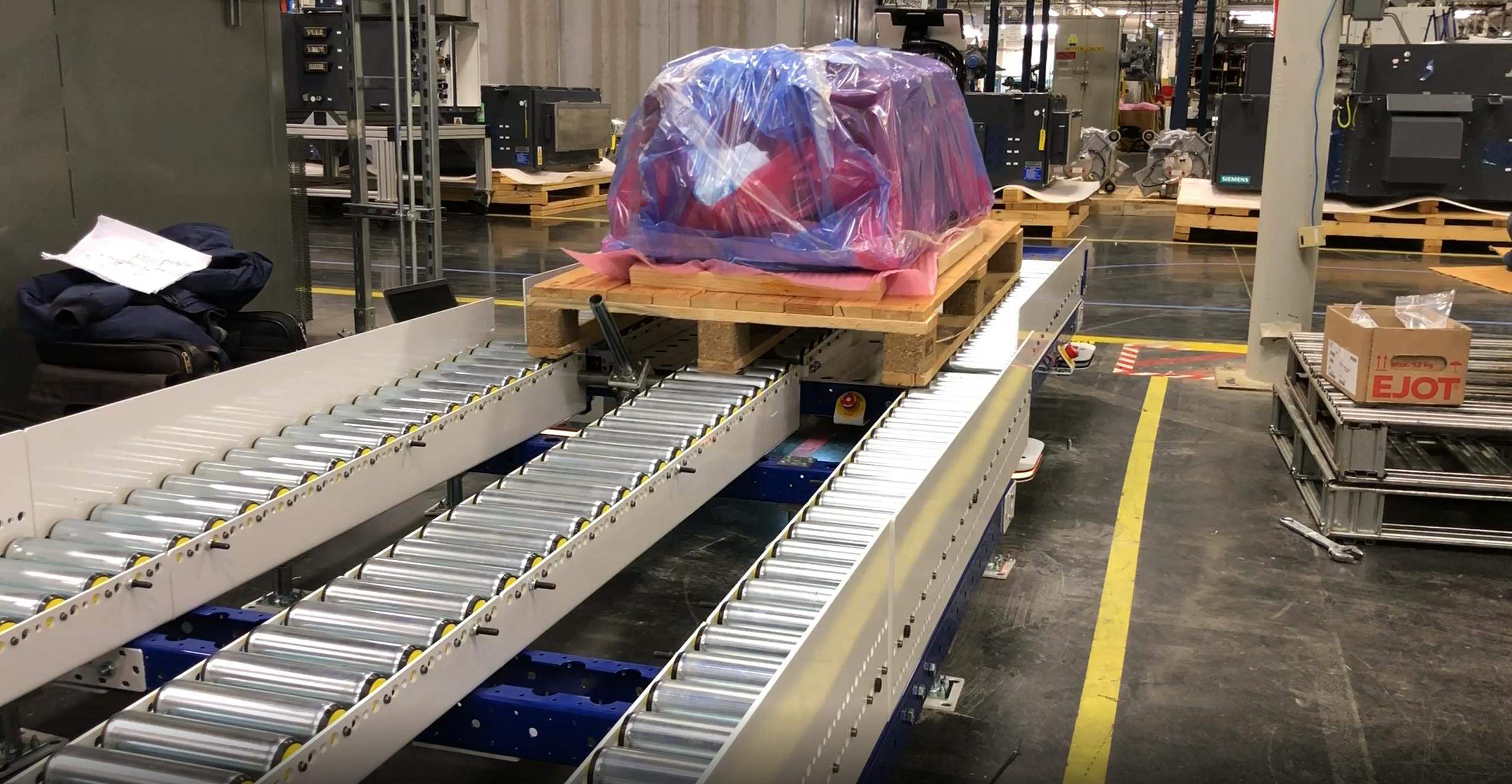Logistics 4.0 and the Mobile Industrial Robot

At the height of the Covid -19 pandemic, supply chains and internal logistics processes across the globe witnessed their fair share of disruption.
The need to secure supplies closer to home and implement social distancing within industrial facilities meant the industrial sector had to get innovative quickly. To ensure operator and material safety in a pandemic world, industrial facilities accelerated their adoption of digital transformation solutions and automation technology. Thus, a pandemic inadvertently increased the implementation of logistics 4.0 concepts across the globe.
But what is Logistics 4.0?
Logistics 4.0 refers to the application of digitalization to create cyber-physical solutions with the capacity to automate and gain real-time control of logistics networks. The digitalization and automated solutions that can be applied include the use of simulation modeling, digital twin, edge hardware, and mobile industrial robots to automate logistics management.
The goals of logistics 4.0 are similar to that of industry 4.0, and they include the ability to gain insight from captured logistics data to automate logistics processes and optimize material or supply flow. Logistics 4.0 is also expected to be agile and support flexible industrial processes to maximize productivity. This means achieving logistics 4.0 is integral to achieving your industry 4.0 goals.
How Does Logistics 4.0 Work?
Logistics 4.0 attempts to apply data analysis, automation, and digital transformation technologies to optimize both internal and external logistics operations. Here, internal logistics operations refer to the material handling system within a manufacturing or warehousing facility. Logistics 4.0 also focuses on creating an interconnected system where the interexchange of data drives the system.
The interconnected system usually consists of automated industrial robots tasked with the physical material handling process, IoT devices to monitor the system, the industrial cloud to centralize data aggregation, and edge devices to decentralize data analytics. This cyber-physical interconnected system also integrates the application of machine learning and AI to deliver diverse levels of autonomy to the material handling process.
The goal of Logistics 4.0 is to deliver cross-facility automation, which leads to an optimized production cycle where material flow occurs without unexpected downtime. Logistics 4.0 intends to implement a flexible material handling system with the capacity to react dynamically to changes in real-time. These changes could be inspired by an increase in customer demand or defective equipment.
The Role of Industrial Robots in Achieving Industry 4.0
Industrial robots refer to both automated guided vehicles and autonomous mobile robots with the ability to navigate shop floors without human intervention. AGVs and AMRs are usually at the center of every autonomous material handling system implementation and are equipped with the processing abilities to analyze data.
Industrial robots are used in a variety of ways to support the material handling process and material flow within the shop floor. Some of the diverse ways industrial robots are used include:
01. Assembly Support
The assembling process involves moving parts from one workstation to another to put components together. During assembly, the flow of materials and parts are crucial to optimizing productivity and the quality of throughput. Industrial robots handle the material flow autonomously thus, limiting human error and ensuring materials get to stations within specified timelines.
02. Transportation
The major function of an industrial robot is to transport materials and tools across the factory floor in an orderly way. Fully autonomous robots are equipped with loading and unloading features that enable them to transport materials with complete autonomy.
03. Warehousing Runs
Order picking and milk runs are essential aspects of warehousing. Industrial robots automate the process of moving products from storage to the docks and across the warehouse. Fully autonomous robots can navigate complex environments and avoid traffic using sensors and other navigation technologies.
04. Just-in-time Delivery
Optimized material flow is characterized by just-in-time delivery processes which ensure materials get to the point where they are required at exact times. Just-in-time delivery also ensures materials do not get stuck in transit, and this is crucial when transporting items with short shelf lives.
05. Data Collection
Industrial robots traverse through the diverse areas of a facility multiple times, making them good candidates for collecting location data. If equipped with cameras and sensors, industrial robots can capture specific data sets and transfer the data it collects to a centralized platform such as an IoT platform.

The Benefits of Digitizing Logistics and Material Handling with Industrial Robots
Automating the material handling process to deliver Logistics 4.0 using industrial robots comes with multiple benefits that cut across improving safety and reducing operational costs. The accident statistics associated with traditional material handling equipment such as forklifts make ensuring safety when transporting heavy items an issue industrial robots address.
Other benefits include:
01. Optimized Scheduling
Optimized logistics and supply chain management relies on developing high-performing schedules and meeting them. Industrial robots can be fed scheduling data to ensure they deliver items at the specified time. Fully autonomous robots can also tweak their speeds to meet delivery schedules, although a maximum speed barrier exists to ensure safety.
02. Reduced Wastage
Industrial robots reduce material waste in two major ways. First, they apply gentle and precise movements when handling fragile items, and secondly, they deliver materials with short shelf lives on time. Proper handling and meeting delivery deadlines ensure scrapping is reduced in manufacturing and warehousing facilities.
03. Enhanced Services
The material handling process is a repetitive task that can be done tens of times during a production cycle. Humans are known to be prone to errors due to the boredom or laxness that comes with repetition. Industrial robots are not affected by repetitive tasks, and they handle each run with the same high accuracy as the last.
04. Reduced Operational Cost
Increased safety on the shop floor, optimized scheduling, and reduced wastage all lead to a reduction in the cost of managing a warehouse or producing products.
Conclusion
Like Industry 4.0, Logistics 4.0 leverages data and automation to deliver optimized material handling processes and an interconnected shop floor. In internal logistics, industrial robots play important roles when implementing data-driven processes to deliver high-performing material handling systems

